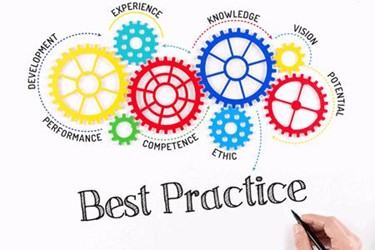Most Of What I Know About CMC I Learned At A CDMO

By Louis Garguilo, Chief Editor, Outsourced Pharma

How does the modern-day CMC leader at drug sponsors get the job done? Michael Markey, newly appointed CMC Director, Pharmaceutical Sciences, Radius Health, Inc., says his ability to apply past experiences from working at CDMOs helps. We’ll take a look at how.
However, there’s at least on lesson he’s learned since joining Radius, and somewhat surprisingly, it has to do with branding and the marketing of contract services.
Can You Comment Here (Please)?
 In an earlier article, Markey espoused some fundamentals for CMC leaders, and advised us on managing external supply-chain relationships. Turning inward now, we find the need to effectively coordinate and guide a multi-functional team of colleagues. The challenge? These diverse professionals don’t report to the CMC head; so within these meandering streams of authority – and some varying incentives and priorities – project team members find themselves paddling through crosscurrents.
In an earlier article, Markey espoused some fundamentals for CMC leaders, and advised us on managing external supply-chain relationships. Turning inward now, we find the need to effectively coordinate and guide a multi-functional team of colleagues. The challenge? These diverse professionals don’t report to the CMC head; so within these meandering streams of authority – and some varying incentives and priorities – project team members find themselves paddling through crosscurrents.
“This creates challenges in any company,” says Markey, “and especially in a matrix organization developing and supporting products. But I can say the experiences and roles I had at CDMOs before joining Radius helped prepare me.”
He explains: “In a CDMO, you have to effectively communicate with different functions, and learn to deal head-on with varying priorities. You work with analytical, business development, process development, engineers on a scale-up team, manufacturing, and many others. You need to consider yourself a part of this big group attempting to at least reach the common goal – overall project success. Within CDMOs there are plenty of those types of technical project roles requiring these skills. I see my current position of CMC head as a natural growth from that experience.”
Today, Markey concentrates more on aligning and budgeting time – his and that of those he needs deliverables from. As he builds out overall planning and execution, he remains mindful of what people in the various functions actually can contribute. And He doesn’t focus narrowly on the deliverables themselves.
“In every conversation,” he says, “I also try to learn about the job my colleague is performing. It helps in understanding how to have a better relationship, and in triaging before we move tasks and deliverables across functions. I can address many challenges with some simple questions like: ‘Do you agree with this plan? Can you please comment on how we might take some of the burden off the other functions as well?’ This approach worked well in my past experiences at CDMOs – and don’t forget there we had the additional layer of working for an external customer.”
Breaking From The Brand
But Markey’s also had a valuable insight since becoming a biopharma CMC leader – one that might take many Outsourced Pharma readers by surprise. It’s an articulation melding marketing and branding messages with actual customer experience.
“I’d like to highlight the fact that the brands CMOs associate themselves with include inherent systems of operation, set methods, and prescribed presentations,” starts Markey. “There's always some template for the sponsor’s product to fit into. For example, a CDMO will describe this certain model for transferring a program in, for transitioning it from pre-clinical to IND to registration, then for validation and commercial steps. On their websites, this can even be branded with color-coding. There’s a real drop-in template feel to how things will be experienced.
“That may work to a certain level,” he continues, “but to really achieve the customer’s goals, and manage the complexity and variability that comes with new products and business models today, success more than ever derives from individual efforts. It’s important we don’t undervalue or miss that it's individuals that go beyond the template, that innovate, spend extra time in the lab, and put together that particular presentation or submission that pushes your assets to the next levels. So it’s important on both ends [sponsor and CDMO] to foster and promote these individuals to continue to get the best from them. Recognition helps keep you beyond that templated feel.”
Accordingly, when a sponsor is contemplating who to work with, “while this is based partially on the experience behind the formation of the template, the lasting images from successful projects and relationships will come from individuals on the project team.”
I ask Markey how sponsors can give recognition to these individual efforts at the service provider. He replies that Radius sends thank you notes to individuals and those they report to. “Other ways we achieve this is by finding ways to collaborate with more scientific endeavors at the CDMO, but also by looking at ways of networking in support of a person's individual growth. We actually help make personal connections. Conferences are a great opportunity to put people together, and help grow their network with ours.” He adds that nowadays it’s feasible to compliment good workers on certain social platforms. “You can highlight the contribution they've made without speaking to specifics,” Markey says.
“You can't always send gifts and offer monetary incentives,” he concludes, “but there are ways to be creative in recognizing people on a personal level.”
Shared Experiences
I learned that Markey isn’t particularly atypical at Radius. “This isn’t the first job for most people. I actually think it's the best part of the virtual model: You need people who can come in from various backgrounds and experiences to move the organization along. The systems aren't always set in place; you have to bring your prior experiences to execute, and also to build up those systems.”
Markey says of his colleagues, “I was pleasantly surprised to learn that about 40 percent of those involved with CMC have some prior experience in the CDMO world. And most of them also had some experience at other drug sponsors. All of us then can share the empathy in our relationships with CDMOs, and the understanding in how to manage those relationships to benefit Radius, but also be beneficial to our partners.”
